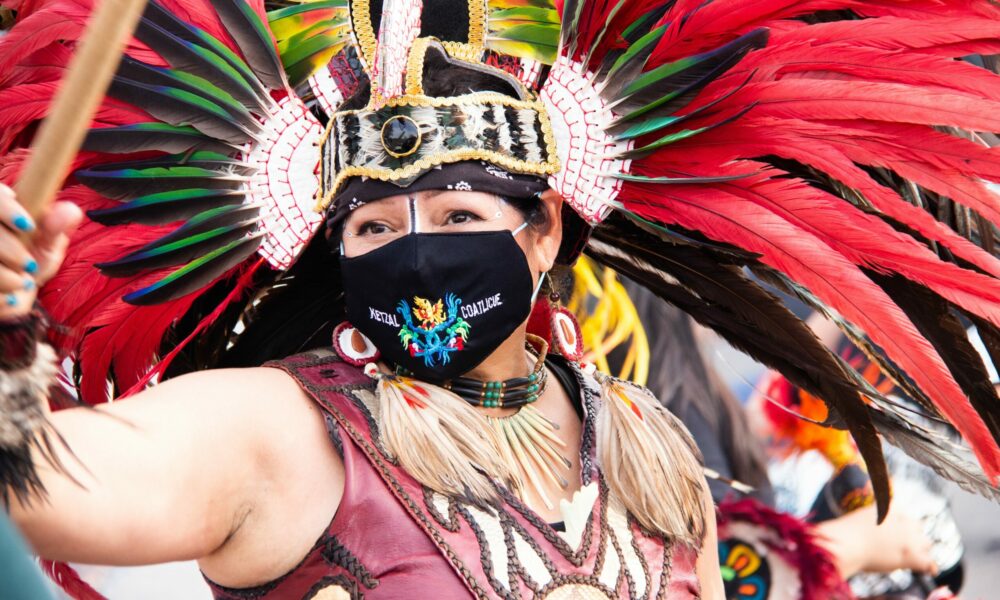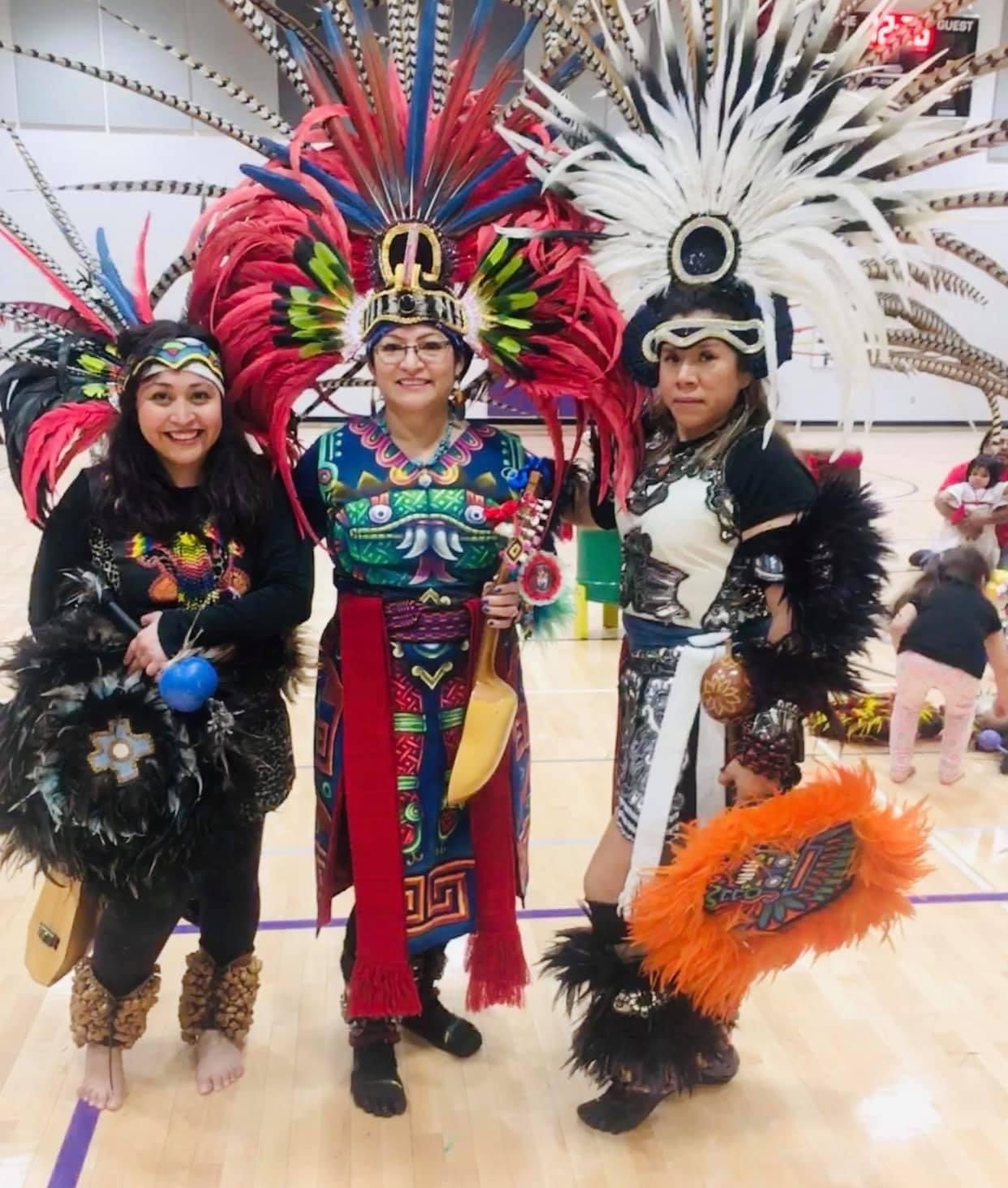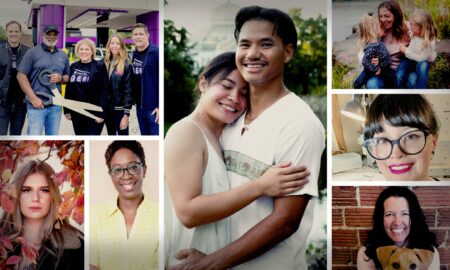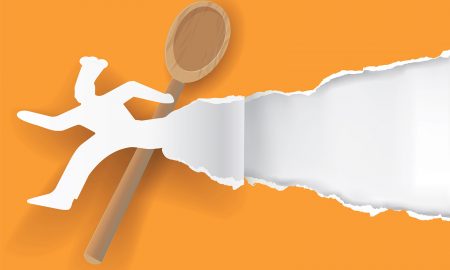

Today we’d like to introduce you to Susana De Leon.
Hi Susana, can you start by introducing yourself? We’d love to learn more about how you got to where you are today?
I was born in Torreon, Coahuila Mexico. My family comes from Zacatecas on my maternal side and from the border towns in Coahuila on my father’s side. I became interested in dance at a young age. My uncle and other family members danced indigenous dances in the rural community where we lived. My mother supported my interest by creating all my regalia for dance. I was selected to participate in school dances and eventually became part of the teacher’s college folkloric ballet. In 1985 I emigrated to the U.S. In 1989 I came to Minnesota and became involved in folkloric dance with people from the West Side of Saint Paul. We performed for school and community celebrations. In 1992 I started studying at the University of Minnesota. I met different professors and community members involved in the Nahuatl and Aztec cultures and the preservation of cultural practices from Indigenous communities. The first celebrations I was involved with in Minnesota and Saint Paul was related to the Day of the Dead. Over the next year, a group of students and the community started to practice Indigenous Mexican dance, known as Chichimeca, Conchero, or Aztec dance. The group was a cultural space for arts, dance, drumming, and leadership development. I lead a weekly rehearsal space near the University of Minnesota and eventually formed a second group of dancers based off the basement of Salem church, located in Minneapolis. In the year 2000, our group officially became Kalpulli KetzalCoatlicue or “Ketzal” as we call it for short. We founded Ketzal with the intention of creating a safe space, free of the violence of all types, to learn, live and thrive in the tradition of our ancestors. We were teachers and learners and instituted practices based on community work, cooperation, and volunteerism. We worked communally to create regalia, produce art and reproduce ancient social and political practices that were of value to us. As I developed as a leader, other women and men were rising up with me in dance tradition, dance execution and dance organization. The relationship with elders and with young dancers is a cycle that continues to teach me every day about my role and my abilities. I continue to teach but I learn a lot from the participants in their own unique styles. I also learnt from the council of dancers that makes decisions for Ketzal. Together with these groups of people, I became a better leader and eventually, in 2005, I was named a Captain in the tradition of Chichimeca, Conchero, Aztec Dance. Continuing to teach and learn, to guide and develop, through founding more dance groups, I earned the distinction of becoming a General of dance in 2018. The recognition of the communal work done in Minnesota goes to all the members of Ketzal. Giving me the honor of being named a General bestows upon our groups a very special place in the traditions. The distinction opens up special learning opportunities for all of us and the ability to learn more from elders in Mexico.
I’m sure you wouldn’t say it’s been obstacle free, but so far would you say the journey have been a fairly smooth road?
Learning from oral tradition requires a big time commitment, a monetary investment, a willingness to fail and get up, and an absolute love and passion for what you do. Becoming a leader is a path forged with growth, pain and redirection. And a path that never ends. I looked for models of leadership that were focused on female empowerment that balanced societal views of male power and privilege with our Indigenous understanding of balance, gender fluidity and manifestations of energy in the world. To that aim, we created groups of youth to build solidarity among them and create safe spaces that were guided and that required people to be accountable to one another. It has not always been easy to confront tension or to apply restorative measures of justice but we have done it. I also am accountable to the dancers, the elders and the community I serve. A big struggle has been the lack of an appropriate space for teaching dance and to work on art. We have a small cultural center attached to my legal practice but we have outgrown the space long ago. We were then taken in by a local charter school, El Colegio High School, where we now rehearse and are able to conduct art workshops. But we share El Colegio with many other groups and that is challenging. We have also lost people to age, disease and violence and it is hard to accept that they are gone. We hold their memories close to our hearts and pay homage to them during the Day of the Dead.
With regard to the actual learning Indigenous tradition and dance are not printed. There are no books on how to be a traditional dancer, this is a path you make while walking it. There are books of songs but there is no music to the songs, you have to learn the music in a ceremony. There are no rituals in print, no way of knowing how to engage in the ceremony other than through oral tradition, participation and lots of trips. When you make an error you feel bad, you go over your mind how did I ever make that mistake? But, soon you realize that those are the stepping stones to learning. You make the teachings yours when you embody them, and you make mistakes along the way. It is important to learn, to grow, and to continue being curious about your own process.
Thanks – so what else should our readers know about your work and what you’re currently focused on?
I am an Indigenous Mexican traditional dancer, a General in my tradition and an artist. I also have a JD and practice law in the area of immigration. I have been learning through oral tradition for thirty years and I have much to learn. I love participating in dance and ceremonies and to spend time with elders. I have a great time teaching and have created strong bonds with other dancers and their families. I love challenging the youth to be precise in their steps, to learn the songs early and to develop their art. I figure that I had to go very far to learn many of these cultural practices and now the youth have a teacher near them and, through me, they have many elders around them. I seek to engage with others who want to be present and help them ground themselves in this art form. We have developed many dancers but the fact that sets us apart is that we have created many levels of leadership that span generations. We are women-led, family oriented and grounded in community practices that have transcended borders and time. I was intentional in proposing and creating what we now have but I never dreamed of the powerful impact these past 30 years of work have in the health of our community. But I have not done it alone, there is a group of strong leaders and families who make it happen.
We all have a different way of looking at and defining success. How do you define success?
I define success in many small moments of sparks of understanding from the dancers in the complex teachings of dance tradition, in their performance and execution and in the satisfied faces I see when they own their power. As a group, we have managed to survive and thrive with family and community support. We were self-sufficient for many years and have lately begun exploring other options. So far we have been able to knock on doors to seek a change. I define success as having those doors open for us to start transitioning into our new phase. I believe arriving at different places in our growth is a measure of success but there is never an end to what you can pursue.
Contact Info:
- Instagram: @danzaketzal
- Facebook: https://www.facebook.com/Ketzaldancers
- Twitter: @lajefadeleon
- Youtube: https://www.youtube.com/ketzalcoatlicue

Image Credits
Susana De Leon











